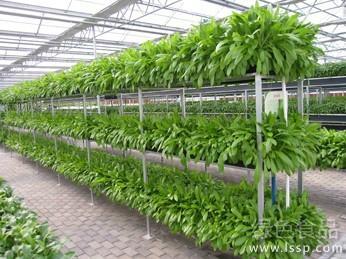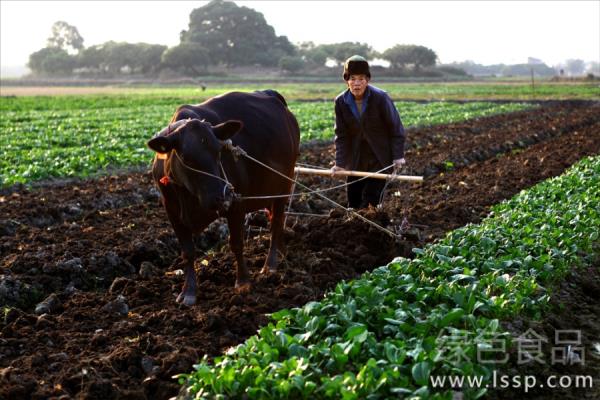Sowing and cultivation techniques of konjac with strong adaptability and high economic benefit

Konjac planting
Konjac, also known as Guitou, flower connecting rod, is a perennial herb of Araceae.
Konjac is rich in nutrients. According to the determination, konjac contains a lot of glucomannan and 17 kinds of amino acids needed by the human body, as well as a variety of unsaturated fatty acids. According to the Compendium of Materia Medica and the Dictionary of traditional Chinese Medicine and other medical monographs, Konjac has the functions of reducing swelling, dispelling poison, resolving phlegm, dredging pulse, invigorating stomach and so on, so it is favored by the world health food market and is popular in Southeast Asia. Moreover, the price is expensive, with each ton of konjac flour reaching more than US $2000 in the Hong Kong and Macao market.
Konjac has wide adaptability and low requirements for soil and air temperature. It can be planted in plain, mountain area, field edge, front and back of the house. Konjac has high utilization value and can be used to process konjac noodles, cakes, jam, small champagne and other series of foods as well as medicines. Therefore, the prospect of development and utilization of konjac is very broad.
1. Select the plots and prepare the land carefully. Select the sandy loam soil with loose and fertile soil, deep soil layer, cool shade and no stagnant water on the gentle slope, fine soil preparation and trenching to prepare for sowing. Continuous cropping plots, 10 days before sowing, were evenly spread with 50ml / mu of quicklime and 100kg of quicklime, and ploughed into the soil. Plots that have been cropped for three years must be stubble.
2. Ridge, intercropping and interplanting. Konjac sowing uses deep trench high border (ridge), ridging cultivation, ridge and furrow to maintain more than 35 cm, border width 40 Mel 120 cm, terminal bud 45 degree angle oblique, after sowing cover soil 10-15cm. When planting, pay attention to "shallow planting, deep obstruction". When sowing, it is recommended to cover the border with grass and "make grass with grass", with a thickness of 5ml and 10cm. Intercropping and interplanting should be carried out in the land where the sunlight is more than 8 hours, and the konjac-corn model is usually adopted. The maize variety with medium maturity and high stem is selected, and the growth period is about 130d. The seedlings are raised in late March, transplanting in the middle of April, and the plant distance is 30-40cm. When transplanting, the leaves of corn and konjac are vertical. The corn stalks were treated in time after corn harvest at the end of July and the beginning of August to provide sufficient light for the growth of konjac.
3. Select taro and disinfect it. Choose taro with glossy epidermis, Zhou Zheng shape, small bud nest, flat mouth, strong terminal bud, smooth surface, no scar, no disease and no injury. Before sowing, the seed taro will be dried for 2 murals for 3 days, combined with air drying for disinfection. The method is as follows: ① per kilogram of seed taro is fumigated with 40% formaldehyde 2ml + potassium permanganate 1g for 24 hours; ② with 72% agricultural streptomycin 500x, 53.8% can kill 500x solution, alternate spray disinfection 2rel 3 times.
4. Sowing at the right time and reasonable close planting. The suitable sowing time of konjac is from March 20 to April 10, a little later in high altitude and a little earlier in low altitude. When sowing, taros are classified and cultivated according to their size. The sowing density is 6 times of seed taro diameter as row spacing and 4 times of seed taro diameter as plant spacing.
5. Apply fertilizer scientifically. The general principle of fertilization of Amorphophallus konjac is to take farm manure as the main fertilizer, chemical fertilizer as the supplement, base fertilizer as the main fertilizer, topdressing as the supplement, and insist on increasing phosphorus, controlling nitrogen and supplying potassium. At the bottom of the mu, 2500 million kg of farm manure, 40 kg of potassium sulfate compound fertilizer or 40 kg of potassium sulfate compound fertilizer and 50 kg of ecological organic fertilizer were applied at the bottom of the mu. Using ditch application, first open the ditch strip to apply organic fertilizer and chemical fertilizer, then cover the soil with fertilizer, then put the seed taro obliquely on both sides of the fertilizer application ditch, and finally ridge and cover soil to cover 15-20cm. In the process of fertilization, strict isolation of fertilizer species should be implemented so as not to cause rotten seeds and burn seedlings.
- Prev

Promote the aerosol cultivation of scientific vegetable soilless cultivation techniques
Promote the aerosol cultivation of scientific vegetable soilless cultivation techniques
- Next

Management method of winter ploughing in cotton field to eliminate overwintering cotton bollworm
Management method of winter ploughing in cotton field to eliminate overwintering cotton bollworm
Related
- Fuxing push coffee new agricultural production and marketing class: lack of small-scale processing plants
- Jujube rice field leisure farm deep ploughing Yilan for five years to create a space for organic food and play
- Nongyu Farm-A trial of organic papaya for brave women with advanced technology
- Four points for attention in the prevention and control of diseases and insect pests of edible fungi
- How to add nutrient solution to Edible Fungi
- Is there any good way to control edible fungus mites?
- Open Inoculation Technology of Edible Fungi
- Is there any clever way to use fertilizer for edible fungus in winter?
- What agents are used to kill the pathogens of edible fungi in the mushroom shed?
- Rapid drying of Edible Fungi

